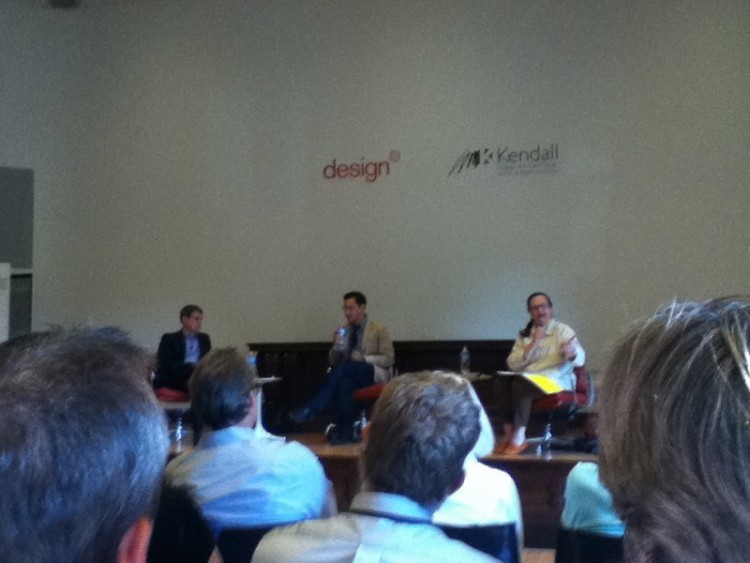“Why don’t we define what art is?”
This question that has plagued art students and artists alike was also the remark that kicked off DesignWM (Design West Michigan) and Kendall College’s collaborative discussion panel, “The Difference between Art and Design,” last Thursday night.The comment was met by a wave of appreciative laughter from the audience, as everybody settled in for the hour-long discussion.
The panel covered a wide range of topics, from defining design to the nature of modern art to what is required for someone to be able to view and form an opinion about art. The participants included Susan Szenasy, editor-in-chief of Metropolis magazine, as the moderator, and the two panelists were Andrew Blauvelt, the Walker Art Center in Minneapolis’s Design Director and Curator, and Joseph Rosa, director of the University of Michigan’s Museum of Art.
According to David Rosen, President of Kendall College, the discussion’s intention was to be a sort of overture to ArtPrize. In his opening remarks he cheerfully called the panel “an hors d’oeuvre to the feast of conversations that will take place during the event.”
“Artprize provides us with the opportunity to celebrate creativity in all its forms, by all people, to reflect on the power of innovation to change the world, and to join in the crucial public conversation about the importance of art and design,” he continued.
Once the discussion got under way, Szensay asked of art in general, “How can you begin to understand it without years of training? Or can you?”
This is an interesting question to ask a city on the brink of an event like ArtPrize. In less than two weeks, Grand Rapids will be overrun with public art in every imaginable sphere and scale, and the streets will fill with Rapidians wandering around, forming, developing and discussing opinions on the various pieces. It’s a controversial thing to ask if average, untrained citizens have the ability to understand what they’re looking at, and whether or not they can still have educated conversations about it. Art is one of the most open-ended fields our culture has. It’s ever-expanding and the definition is both elusive always in flux.
Each panelist states that having prior knowledge of art/history can be useful in different ways, but that in the end each person will define art by what they like and what they don’t like.
“Either you like something or you don’t,” Rosa says. “Scholarship should get you through the door, and then look at the art. You set the tone.”
“It’s a full spectrum,” Blauvelt adds. “[It’s about] your reaction to it.”
The discussion was followed by a brief Q&A session. The first question asked was, “What is the difference between art and design?” The question was welcomed by a thunderous round of applause from the audience, the bulk of which seemed to be just as unclear on the definition, despite the previous hour. Admittedly, the discussion focused largely on architecture without addressing art as a whole, leaving art as a concept completely undefined.
After a brief discussion, the panelists got caught up in a long-winded tangent. This was something of a trend throughout the panel. Two questions, later the same query resurfaced, asking not only about the difference between art and design, but also about visual art’s importance in society as a whole.
Rosa answered, without hesitation,“It’s essential.”
Joseph Rosa’s response to the final question was decidedly well-catered to a city that is about to embrace and be completely transformed by visual art in all its forms and stages.
The Rapidian, a program of the 501(c)3 nonprofit Community Media Center, relies on the community’s support to help cover the cost of training reporters and publishing content.
We need your help.
If each of our readers and content creators who values this community platform help support its creation and maintenance, The Rapidian can continue to educate and facilitate a conversation around issues for years to come.
Please support The Rapidian and make a contribution today.
